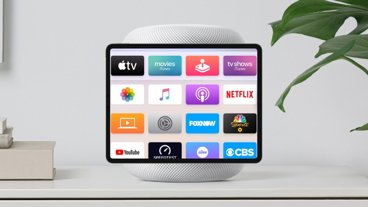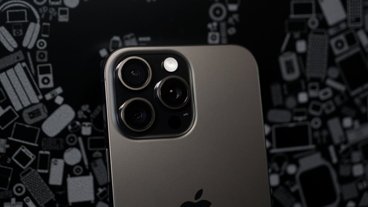CEO Tim Cook once envisioned China as Apple's next big market, set to eclipse even the U.S. in revenue. That dream has taken a raincheck in the past two years, with iPhone units down 8 to 11 percent — and Apple is unlikely to bounce back, an analyst suggested in a memo obtained by AppleInsider.
Wall Street analysts were previously looking for a 15- to 60-percent unit recovery in Apple's fiscal 2018, but several obstacles are now in the way, said UBS's Steven Milunovich. Apple's primary iPhone market — the high end, above 4,000 yuan — is claimed to be "fairly saturated" in China, even though it consists of about 200 million to 300 million people.
Even then, Apple is facing stiff competition from local giant Huawei, and increasingly long customer upgrade cycles. The company is also being hobbled in smaller Chinese cities by weak distribution networks, and the fact that its cheaper phones use outdated features. Except for the iPhone SE, Apple has resisted releasing phones that are both new and inexpensive, preferring instead to discount older products.
Chinese iPhone sales will likely remain flat, with relatively little long-term growth, Milunovich predicts. Non-local smartphones — mostly from Apple — saw their shipments decline 16 percent in the March quarter, according to government data.
UBS is nevertheless maintaining a "Buy" rating for Apple stock, with a $190 price target. Indeed, the company's main global rival, Samsung, is doing poorly in China, having had its marketshare stolen by both Apple and local vendors.
Cook has tried to put a positive spin on its numbers. In Apple's most recent quarterly results announcement, Cook said the company was up 19 percent on an average weekly revenue basis, and set an "all-time record" for regional revenue. It's possible to grow income while still slipping behind in share, however.
Price competition could be a running theme with Apple's 2018 iPhone lineup. The company is thought to be working on two more OLED models, sized at 5.8- and 6.5-inches, but at least one analyst has suggested the former could cost $899, while the latter will take up the iPhone X's $999 price tag. A 6.1-inch LCD iPhone might be cheaper still, while retaining features like Face ID and an edge-to-edge screen.
 Roger Fingas
Roger Fingas






-m.jpg)






 Charles Martin
Charles Martin


 Wesley Hilliard
Wesley Hilliard
 Stephen Silver
Stephen Silver
 William Gallagher
William Gallagher

 Marko Zivkovic
Marko Zivkovic









23 Comments
I’m not sure focusing on revenues qualifies as “positive spin.” I’d much rather see growing revenues and shrinking unit sales than the other way around. In fact, if they can keep growing profit through higher revenues and margins, they would be crazy to sacrifice either in the name of higher unit sales.
Going forward China will be a market filled with questions. As they try very hard to ramp up internal production and may well make it more costly for goods developed in other countries. They may also have steam building for a 'Buy Local' political movement. Where goods designed AND manufactured in China get sales from 'patriotic' buyers. Even if the goods are of lesser quality. Remember all the pressure to BUY AMERICAN CARS in the 70's even when the majority of American cars were crap. I would guess there will be huge internal pressure to buy products that are developed and made in China. And I would imagine there will be growing pressure in the USA to look carefully at any product that has internals put in place via Chinese manufacturing. Who knows what all ends up on that hard drive?
Chinese companies will dominate the Chinese market...American companies will dominate the American market. The fight will be who will dominate the rest of the world markets, i.e., Asia, South America, Europe, etc.
I don't necessarily agree with this analyst, however in China Apple has no real advantage with regard to their security thanks to Chinese government requirements. It'll take a massive Android breach in China with hundreds of millions stolen from people to shake people up there.
Apple doesn't care about market share. The bottom line is profits.